
Must-Have Features in Engagement Tools for SaaS

by
Wiktoria Slowikowska
Nov 8, 2024
Identify and convert your most valuable users
Sign Up
Delivering a personalized and seamless customer experience is critical to keeping users engaged and satisfied. But how do you ensure that users not only start using your product but keep coming back and becoming loyal customers?
The answer lies in leveraging the right engagement tools—tools that provide deep insights into how users interact with your product and enable you to optimize these interactions. But what features should you look for when choosing the perfect engagement tool for your SaaS business?
Let’s break down the most important features you should look for and why they’re essential in building a solid customer engagement strategy.
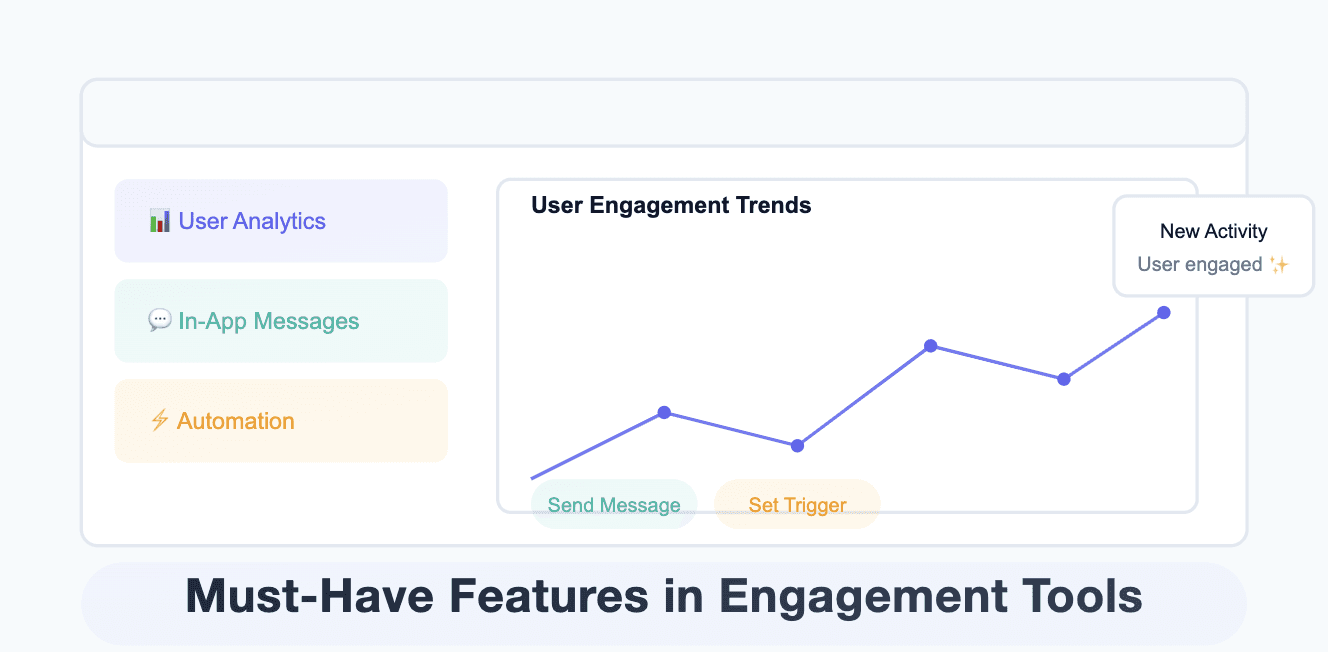
1. User Behavior Tracking
Why it's important: Understanding how users interact with your product is foundational to any engagement strategy. Without behavior tracking, you’re essentially flying blind, unable to understand how users navigate through your app, what catches their attention, and what causes them to drop off.
What it does: With robust user behavior tracking, you can monitor actions like page visits, feature usage, session duration, and navigation paths. This helps you identify which features users engage with the most and which parts of your app or website they tend to ignore.
Why you need it: By tracking behavior in real-time, you can make informed decisions to improve the user experience, enhance feature adoption, and pinpoint areas where users are getting stuck.

2. Audience Segmentation
Why it's important: No two users are alike. By segmenting your audience, you can deliver highly targeted content, campaigns, and support based on specific user behaviors, demographics, or needs. This personalization is what makes users feel understood, valued, and connected to your product.
What it does: Segmentation divides users into groups based on certain characteristics, such as sign-up date, usage frequency, or behavior (e.g., power users vs. casual users). This allows you to tailor engagement efforts, from onboarding tutorials to re-engagement campaigns.
Why you need it: Audience segmentation enables you to create more relevant marketing campaigns, retention strategies, and personalized communication, ensuring that each user receives the right message at the right time.
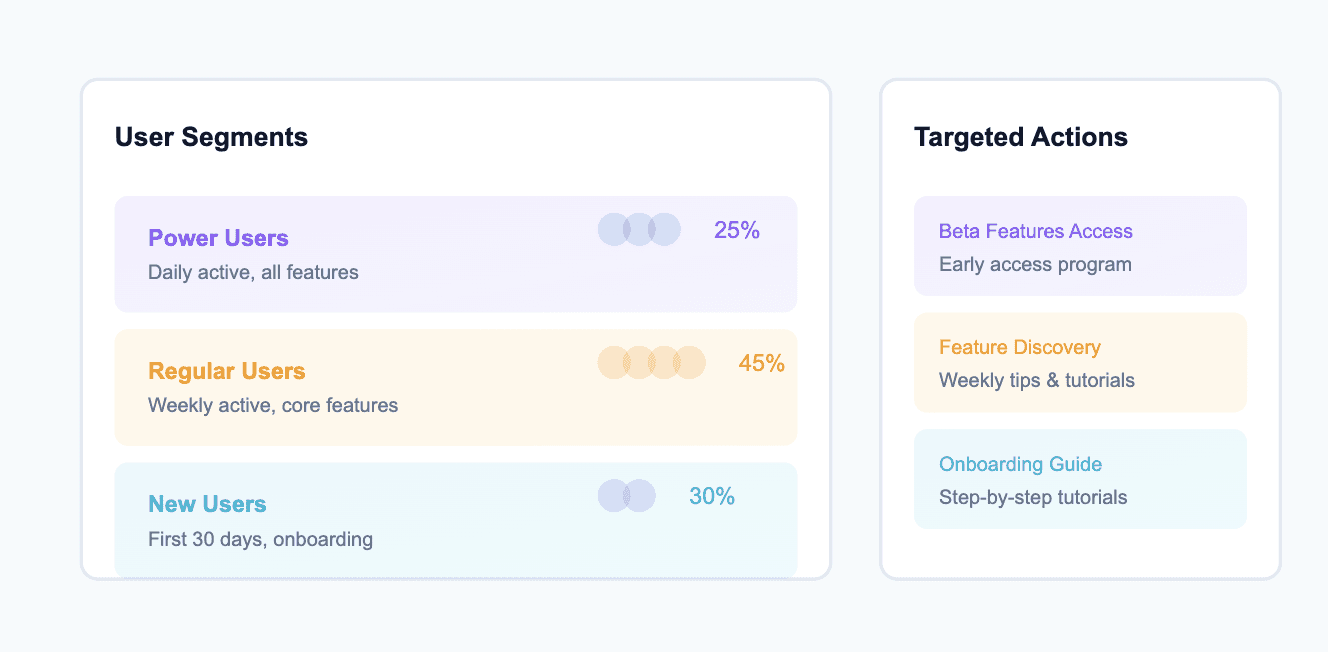
3. Cohort and Funnel Analysis
Why it's important: Understanding where users drop off in their journey is essential to improving engagement. Cohort analysis allows you to group users based on shared characteristics or behaviors, while funnel analysis helps you track their progress through specific steps in a process (e.g., signing up, completing onboarding, or making a purchase).
What it does: Cohort analysis shows you how specific groups of users behave over time. Funnel analysis helps identify where users abandon the process and where you need to optimize. For example, you might discover that a lot of users are abandoning the sign-up process midway or that many users are not completing onboarding.
Why you need it: These insights give you the power to identify friction points in the user experience and fix them, whether it's simplifying the onboarding process or improving product features. It’s about continually refining the customer journey to boost retention and reduce churn.
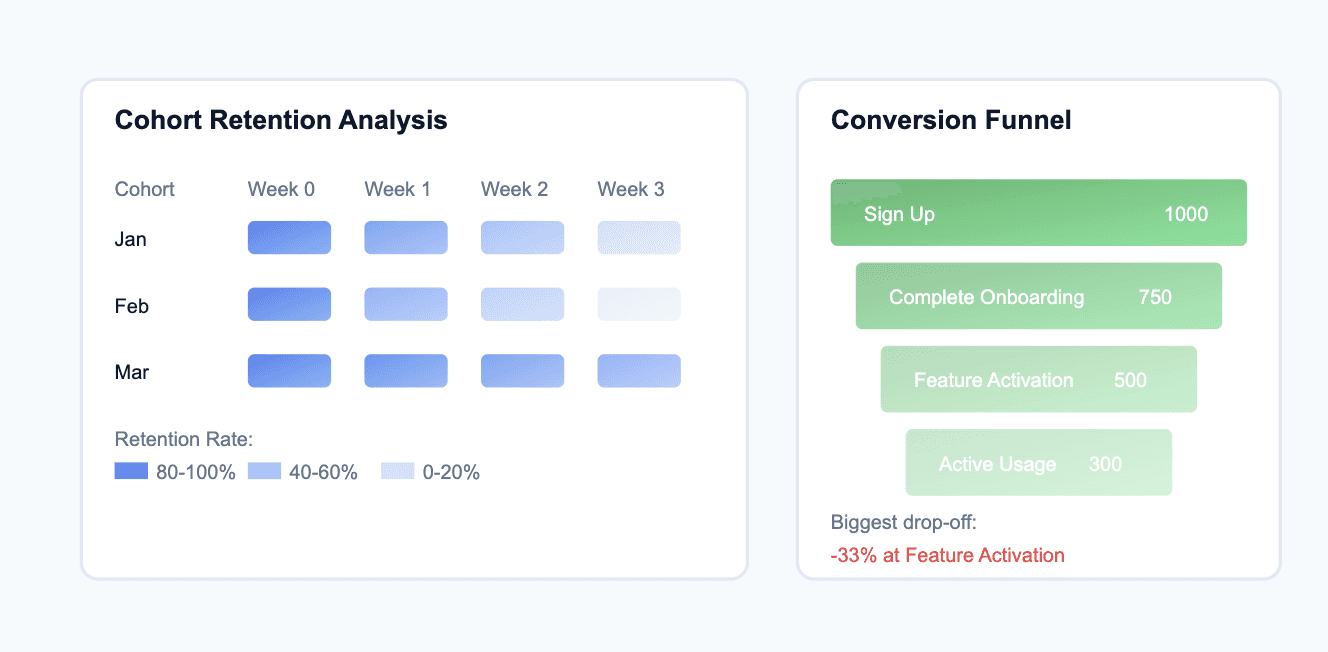
4. Custom Event Tracking
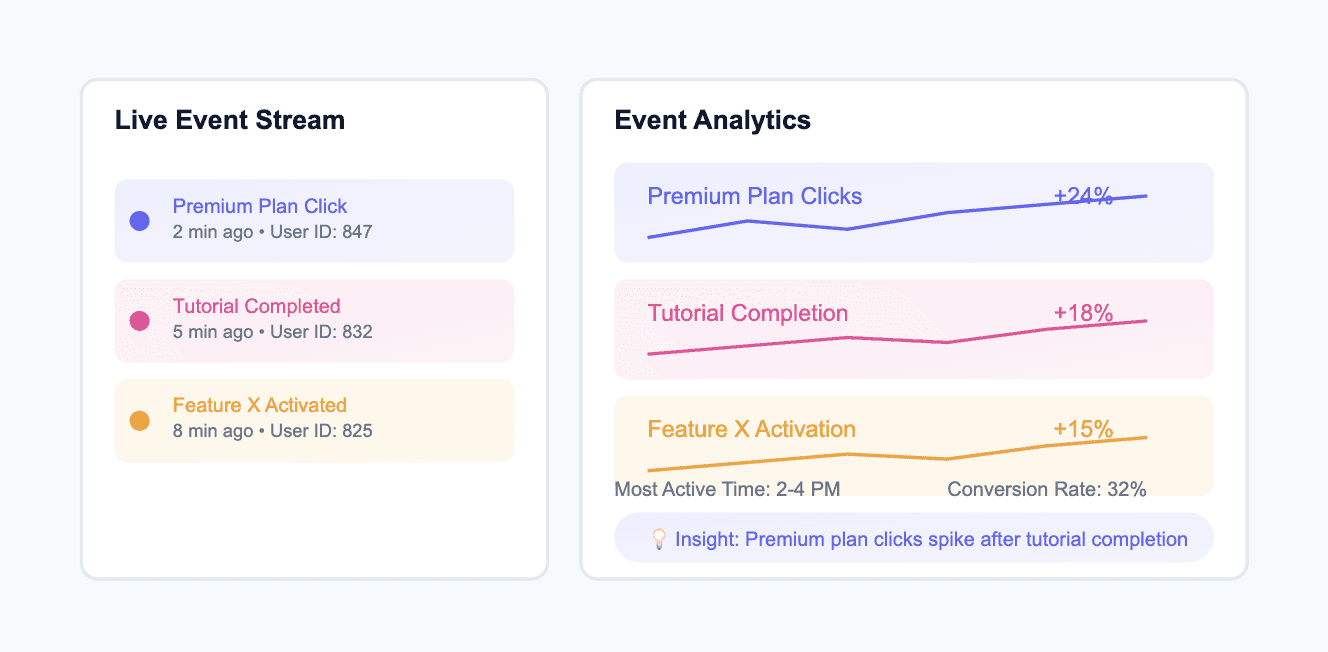
Why it's important: Not all user actions are created equal. Custom event tracking allows you to monitor specific actions within your app that are critical to your business goals. Whether it’s a user clicking a certain button, completing a key action, or viewing a particular feature, event tracking can give you granular insights into engagement.
What it does: With custom event tracking, you can define specific events (e.g., “clicked on premium plan button,” “watched a tutorial video”) and track how users interact with them. This data can be used to refine your product or trigger personalized campaigns.
Why you need it: Custom events allow you to monitor user behavior that directly affects your business. Understanding these interactions helps you optimize features, create targeted campaigns, and improve overall engagement.
5. In-App Messaging and Communication
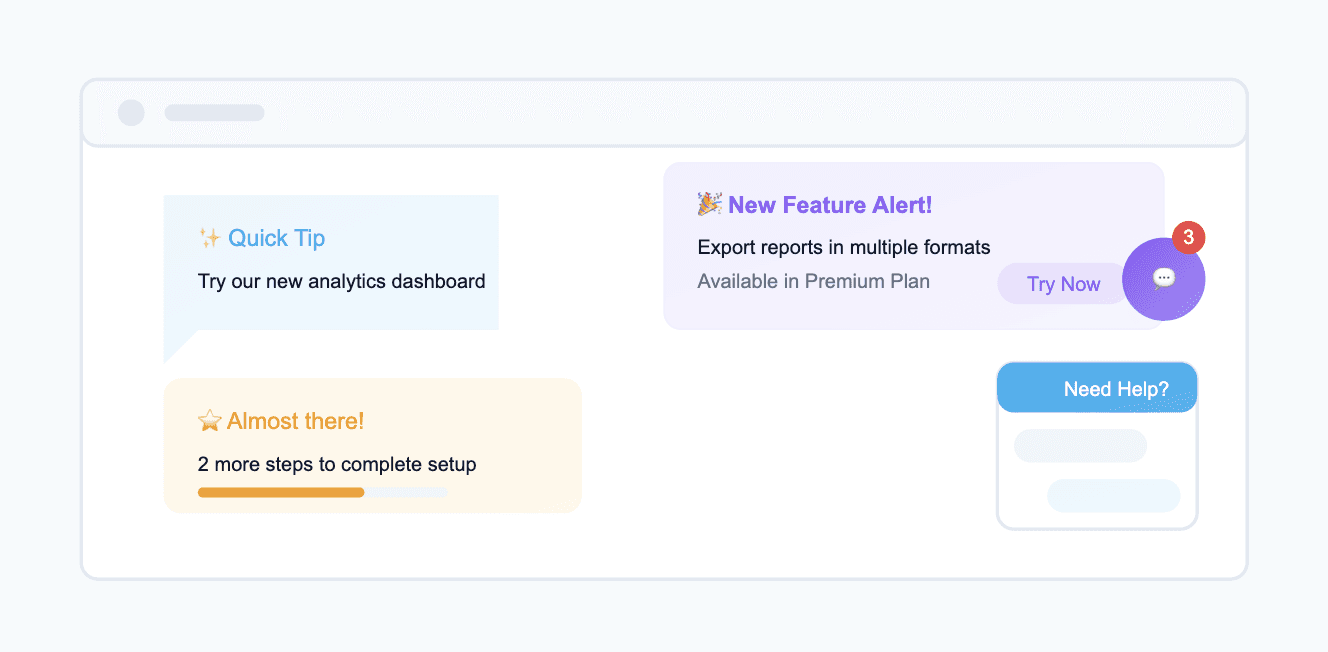
Why it's important: Sometimes, users need a little extra help to stay engaged or overcome a hurdle. In-app messaging is one of the most effective ways to communicate with users at critical moments in their journey.
What it does: In-app messaging allows you to send real-time messages to users while they’re actively using your product. Whether it’s a tutorial prompt, an upsell message, or a reminder about an abandoned cart, these messages can help keep users engaged and guide them toward your business goals.
Why you need it: Engaging users at the right time with the right message can make a world of difference. Whether it’s nudging them to complete onboarding or offering a discount on their next purchase, in-app messaging boosts user interaction and retention.
6. Customer Feedback Integration
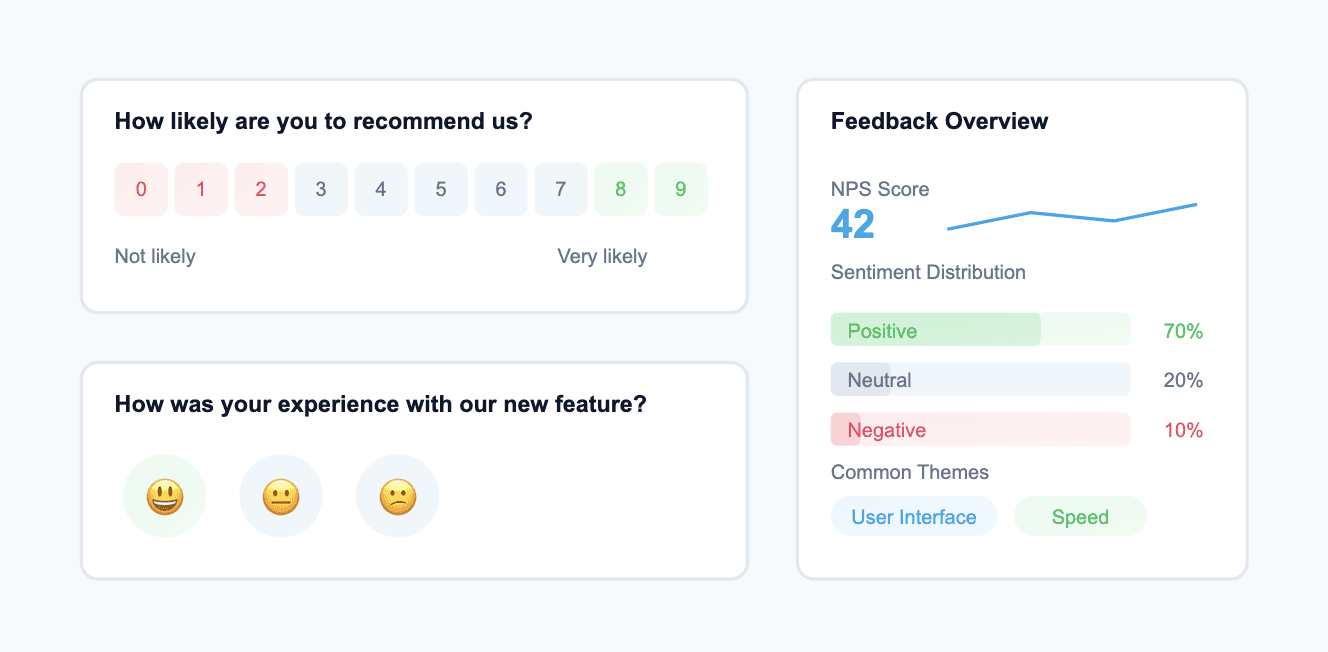
Why it's important: Listening to your users is one of the most effective ways to improve engagement. Gathering customer feedback allows you to understand user satisfaction, pain points, and areas for improvement—directly from the source.
What it does: By integrating feedback tools such as surveys, polls, or Net Promoter Score (NPS) surveys, you can collect valuable insights on user experience. This data can be used to inform product improvements, adjust engagement strategies, and enhance customer satisfaction.
Why you need it: Customer feedback ensures that you’re aligned with your users’ needs and desires. By addressing user concerns and acting on their suggestions, you build stronger relationships and increase the likelihood of continued engagement.
7. Automated Campaigns and Triggers
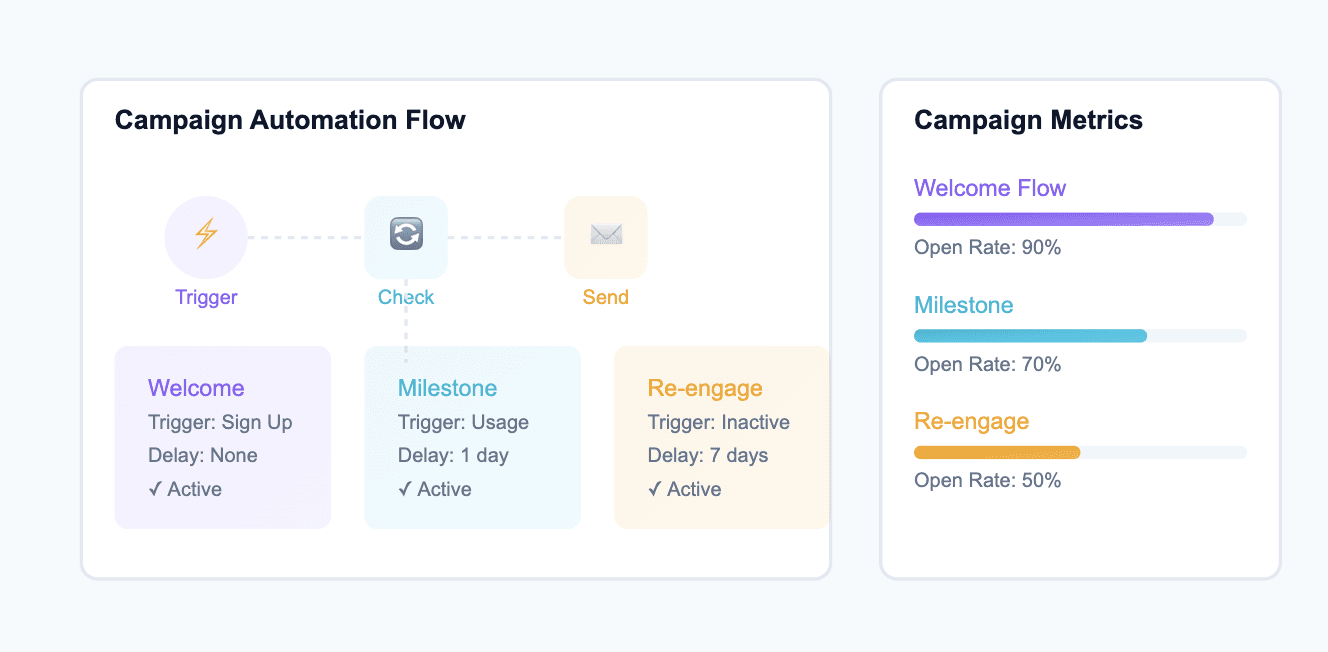
Why it's important: Engagement doesn’t always happen in real time, and sometimes users need a little push to stay on track. Automated campaigns and triggers allow you to send messages to users based on specific actions or milestones.
What it does: You can set up automated campaigns to welcome new users, remind them to complete a certain task, or offer them an incentive to upgrade. Triggers can be set to fire after specific actions, such as completing onboarding, reaching a usage milestone, or showing signs of churn.
Why you need it: Automation reduces the manual effort involved in engaging users, while still providing a personalized experience. Triggers and campaigns ensure that your users receive relevant messages at the right time, without needing constant monitoring.
8. Retention and Churn Prediction
Why it's important: Retaining users is far more cost-effective than acquiring new ones. By predicting churn, you can take action before users disengage, turning potential losses into opportunities for re-engagement.
What it does: Predictive analytics uses data to identify users who show signs of disengagement. Whether it’s a drop in activity, incomplete tasks, or frequent inactivity, these indicators can alert you to potential churn risks.
Why you need it: By proactively identifying users who are at risk of churning, you can intervene with targeted campaigns, such as offering personalized support or incentives, to re-engage them and increase retention.
9. Revenue Metrics and Customer Lifetime Value (CLTV)
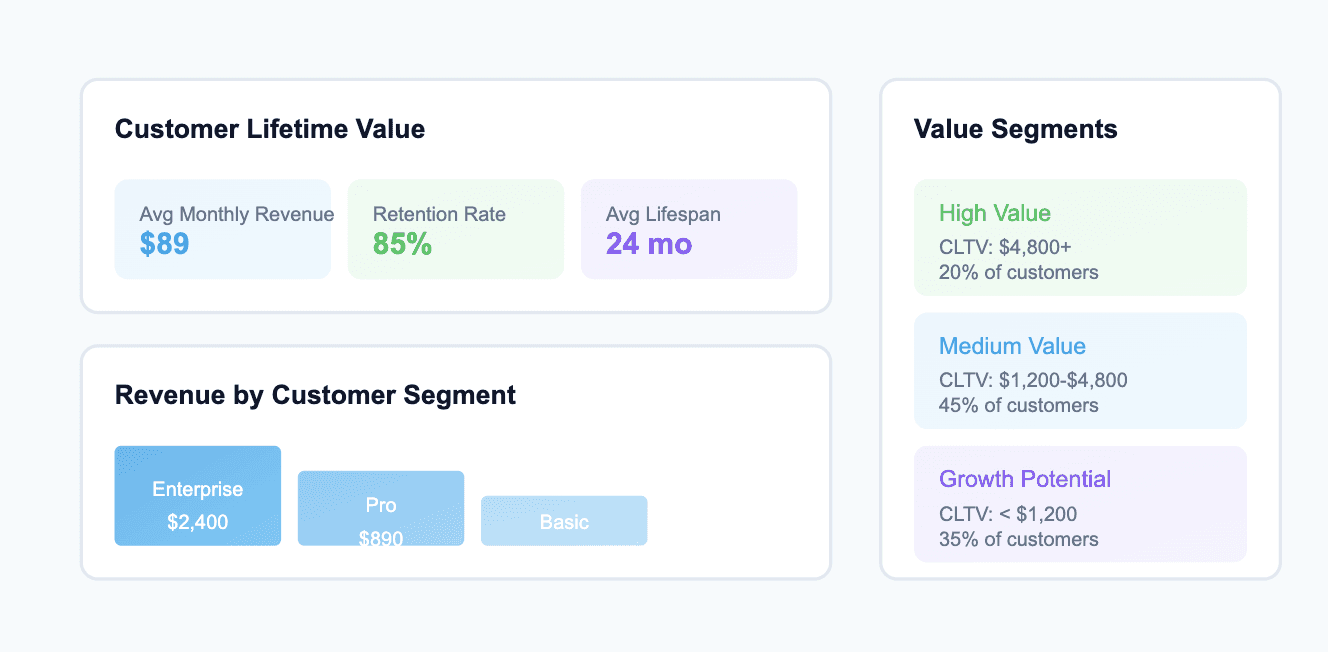
Why it's important: For SaaS businesses, customer retention and revenue go hand-in-hand. Understanding the financial impact of user engagement through metrics like CLTV helps you evaluate the return on investment (ROI) of your engagement strategies.
What it does: Revenue metrics tie user behavior to financial outcomes, helping you understand how engagement affects subscription renewals, upgrades, and overall customer value. CLTV, in particular, measures the total revenue a customer is expected to generate throughout their relationship with your brand.
Why you need it: By correlating engagement with revenue, you can optimize your efforts toward high-value users, prioritize retention initiatives, and forecast future growth. Understanding CLTV also helps you calculate the ROI of customer engagement strategies.
10. Real-Time Analytics

Why it's important: In today’s fast-paced digital landscape, acting quickly on data is essential. Real-time analytics allows you to track user behavior and engagement as it happens, helping you respond immediately to changes in user activity or behavior.
What it does: Real-time analytics gives you up-to-the-minute insights into how users are interacting with your product, including activity on key features, traffic spikes, and engagement trends.
Why you need it: Real-time data enables you to make rapid decisions, whether it’s fixing a bug, optimizing a feature, or launching a new campaign. This agility keeps your users engaged and satisfied, ensuring they have the best possible experience.
Conclusion
As SaaS businesses strive to improve customer engagement and reduce churn, leveraging the right engagement tools is more important than ever. From user behavior tracking to retention prediction, these must-have features allow you to deeply understand how your users interact with your product and provide the insights needed to foster loyalty, improve satisfaction, and drive revenue.
By incorporating these features into your engagement strategy, you can create more meaningful interactions with your users, turning them into long-term, loyal customers. And ultimately, that’s what successful SaaS businesses are built on: not just acquiring users but keeping them engaged for the long haul.




